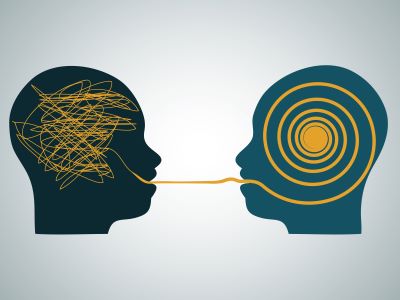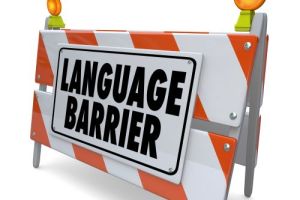

Plain language is all about making information easy to understand. Have you ever felt frustrated trying to figure out what a file is saying? Or wondered why some instructions feel like they are written in a foreign language? Instead of using complicated words or confusing sentences, plain language keeps things clear and simple. The idea is to help people quickly get the point without having to struggle. It’s especially helpful for things like government documents, legal writing, or any kind of information meant for a wider audience. By using everyday words and organizing ideas clearly, plain language makes communication easier for everyone.
How plain language helps
Using plain language is not just about simplifying words—it’s about making communication work better for the intended audience. Imagine reading a government document that clearly explains your next steps or an instruction manual that actually makes sense on the first try.
Beyond Official Documents
It’s not just for official documents, though. Plain language can improve emails, websites, forms, and even legal writing. The idea is to focus on the reader—what they need to know, and how can we say it in a way they can understand the first time? By focusing on word choice, using personal pronouns, and keeping expressions simple, you can ensure your content connects with your audience.
Saves Time and Reduces Frustration
Plain language means crafting messages in a way that’s easy to follow and reduces unnecessary confusion. It saves time, reduces frustration, and helps people to take action without second-guessing themselves. When new documents are written in plain language (e.g. plain English), readers can find the information they need faster and with less effort.
The Reader’s Perspective
The idea is to focus on the reader—what do they need to know, and how can we say it in a way they will understand the first time? Writing that is clear and well organized helps readers process information more efficiently. Clear definitions and other best practices, like breaking down complex ideas into smaller parts, can further enhance understanding.



The Principles of Plain Language
Plain language is built on a few simple principles that make writing clear and accessible. Here are some of the key ideas:
Everyday Words Work Best
Avoid jargon and technical terms unless they are necessary. When you must use specialized terms, be sure to explain them.
Keeping it Short and Sweet
Long, complicated sentences can confuse readers. Stick to one idea per sentence to make your point clear.
Logical Organization
Present ideas in a way that makes sense to the reader. Use headings, bullet points, and a clear structure to guide them through the content.
Know Your Audience
Think about who will be reading your text. Use language and examples they can relate to and understand.
Active Voice Engages Readers
Writing in active voice makes sentences stronger and easier to follow. For example, use “The agency approved the policy” instead of “The policy was approved by the agency.”
These principles are not just rules—they are tools to create writing that connects with readers and makes your message stick.
The History of Plain Language
Plain language did not just appear out of nowhere, it has a rich history rooted in the need for clearer communication.
A Growing Movement
The modern plain language movement began to gain traction in the 1970s, when people started recognizing that many documents, especially government and legal texts, were nearly impossible for the average reader to understand.
Legislative Milestones
In the United States, the Plain Writing Act of 2010 marked a significant milestone. This federal law requires government agencies to use plain language in public-facing documents. By ensuring that people can easily understand forms, guidelines, and policies, this act set the tone for a broader plain language initiative.
Supporting Organizations
Organizations like the Plain Language Association International (PLAIN) have also played a huge role in spreading awareness and providing resources for those looking to improve their writing. The federal government has embraced plain language practices through initiatives like the Plain Writing Act, demonstrating the importance of clear communication in official documents. Thanks to these efforts, plain language is now a recognized standard for creating texts that are clear, accessible, and effective.
EU Accessibility Act 2025
The EU Accessibility Act, coming into force in June 2025, is a groundbreaking piece of legislation aimed at improving accessibility for people across Europe. This act mandates that products, services, and communications, including websites, digital content, and public documents, must adhere to strict accessibility standards.
The act highlights the importance of plain language as a key tool for achieving accessibility. By ensuring that texts are written in clear, simple, and easily understood language, organizations can comply with the act while making their content more inclusive. Businesses and public institutions that adopt plain language practices now will not only meet these legal requirements but also enhance their reputation and connect with a wider audience.
Practical Tips for Using Plain Language
If you are ready to begin using plain language in your writing, here are some practical tips to get you started:
- Understand Your Audience
What is their level of knowledge on the subject? Use language that feels familiar to them. - Replace Jargon with Simplicity
Replace technical terms or jargon with words your audience can easily understand. For example, instead of “utilize,” just say “use.” - Prioritize Key Messages
What’s the most important point you need to make? Lead with that information so readers do not have to search for it. - Break It Down
Use headings and subheadings to guide readers through the text. This makes it easier for them to find what they need quickly. - Shorter is Better
Keep sentences concise and avoid packing too much information into one paragraph. - Test Your Writing
Ask someone from your target audience to read your text or material. Can they understand it easily? If not, revise until it’s clear. - Engage with Active Voice
Use active voice to make your sentences more direct and engaging. For example, “The team completed the project” is better than “The project was completed by the team.”
These techniques can help transform any type of writing, whether it’s government documents, legal texts, or everyday communications, into something your audience can understand and act on with confidence.
Barrier-free Communication Opens Doors
Imagine a customer visiting your website, reading a report, or picking up a flyer, and instantly understanding your message. With plain language, you create writing that is clear, accessible, and impactful.
At Skrivanek – Translation Office Berlin, we specialize in turning complex content into well-organized, easy-to-understand communication. Whether you need help with new documents, plain language translations, or compliance with accessibility standards, our expert team is ready to guide you.
Let’s work together to simplify your communication, save time, and connect with a wider audience. Contact Skrivanek today to discover how our solutions can make a real difference for your business.

